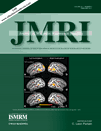T2 preparation method for measuring hyperemic myocardial O2 consumption: in vivo validation by positron emission tomography
Abstract
Purpose
To validate a new T2-prepared method for the quantification of regional myocardial O2 consumption during pharmacologic stress with positron emission tomography (PET).
Materials and Methods
A T2 prepared gradient-echo sequence was modified to measure myocardial T2 within a single breath-hold. Six beagle dogs were randomly selected for the induction of coronary artery stenosis. Magnetic resonance imaging (MRI) experiments were performed with the T2 imaging and first-pass perfusion imaging at rest and during either dobutamine- or dipyridamole-induced hyperemia. Myocardial blood flow (MBF) was quantified using a previously developed model-free algorithm. Hyperemic myocardial O2 extraction fraction (OEF) and consumption (MVO2) were calculated using a two-compartment model developed previously. PET imaging using 11C-acetate and 15O-water was performed in the same day to validate OEF, MBF, and MVO2 measurements.
Results
The T2-prepared mapping sequence measured regional myocardial T2 with a repeatability of 2.3%. By myocardial segment-basis analysis, MBF measured by MRI is closely correlated with that measured by PET (R2 = 0.85, n = 22). Similar correlation coefficients were observed for hyperemic OEF (R2 = 0.90, n = 9, mean difference of PET – MRI = −2.4%) and MVO2 (R2 = 0.83, n = 7, mean difference = 4.2%).
Conclusion
The T2-prepared imaging method may allow quantitative estimation of regional myocardial oxygenation with relatively good accuracy. The precision of the method remains to be improved. J. Magn. Reson. Imaging 2011;33:320–327. © 2011 Wiley-Liss, Inc.




